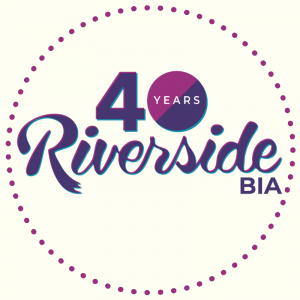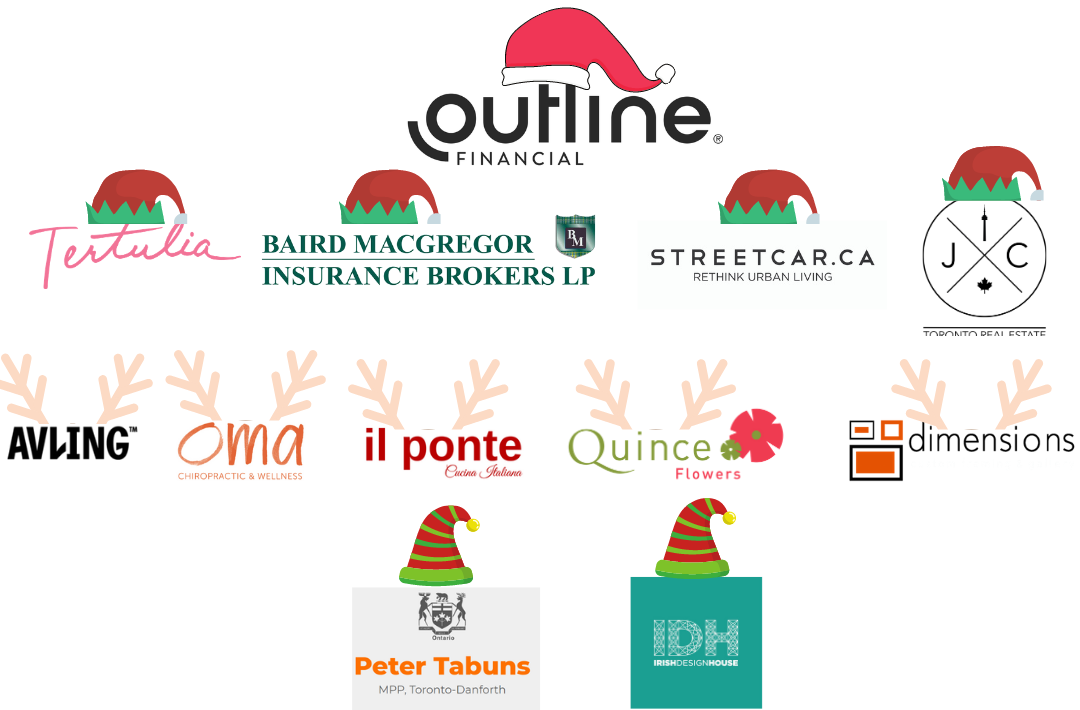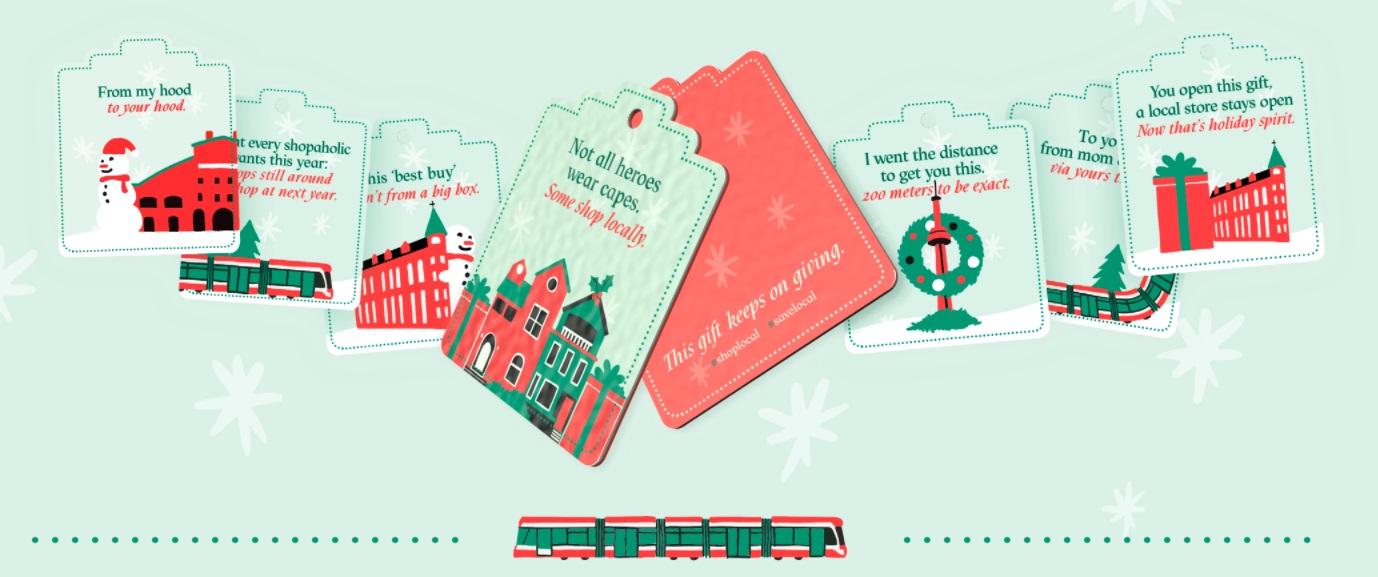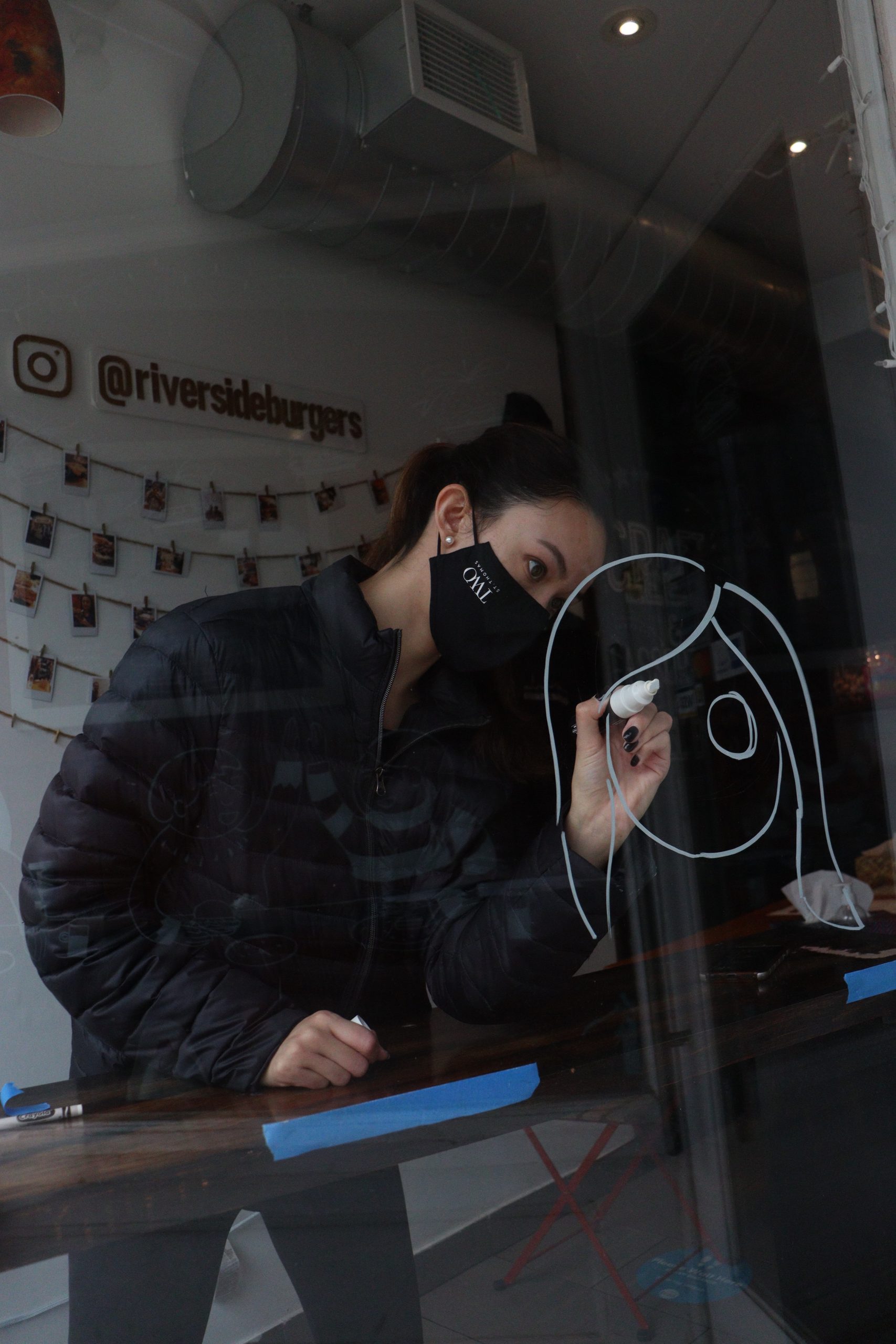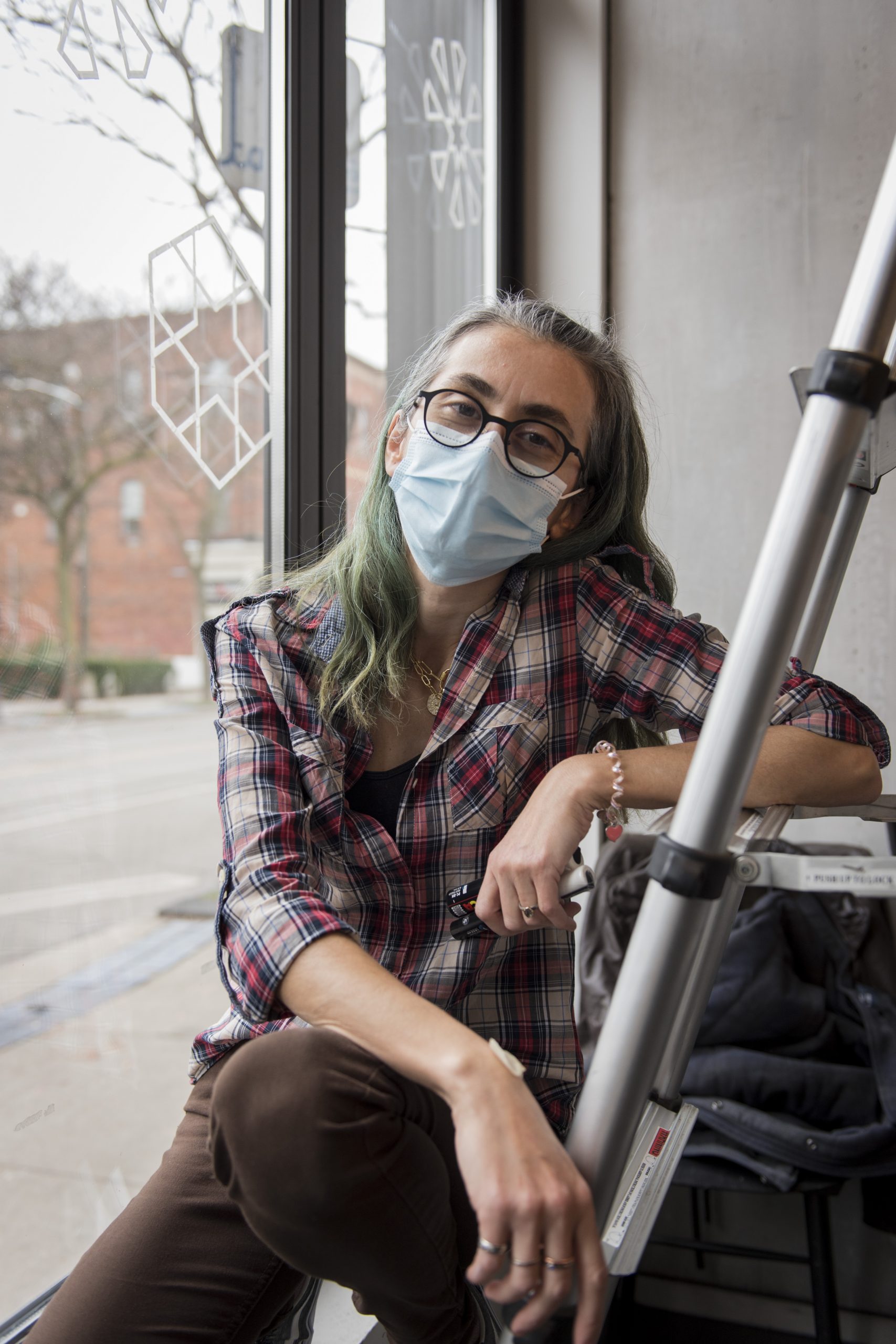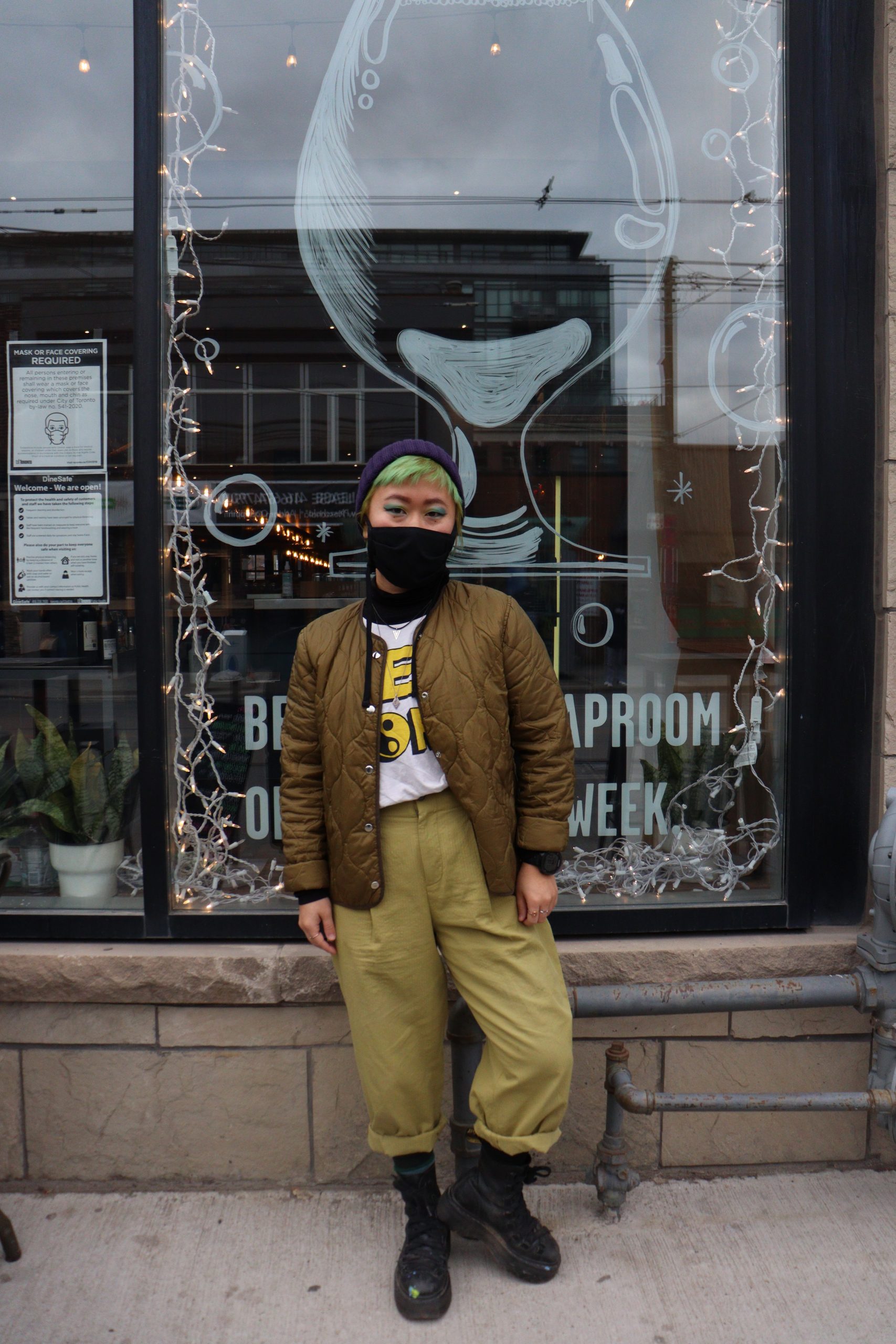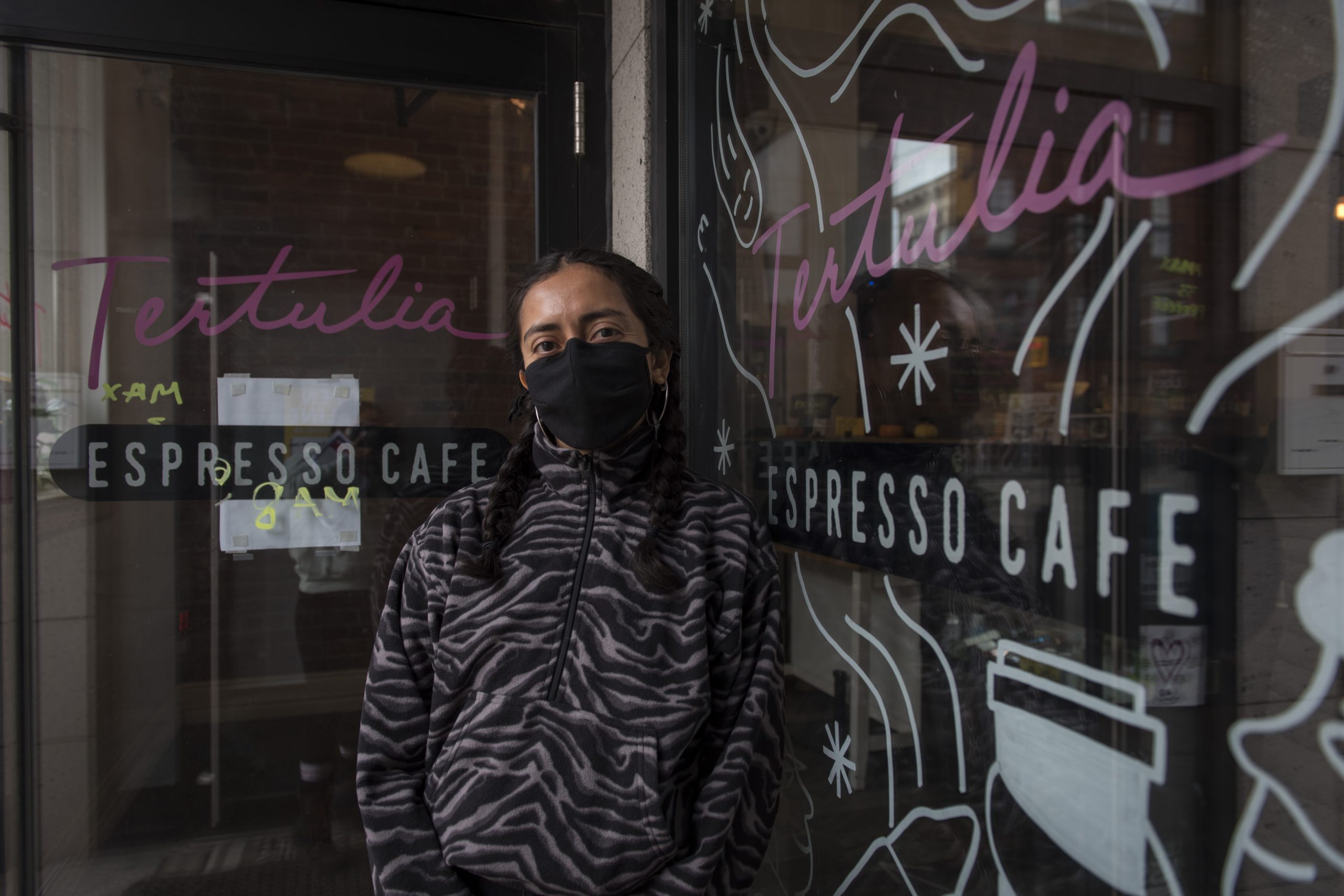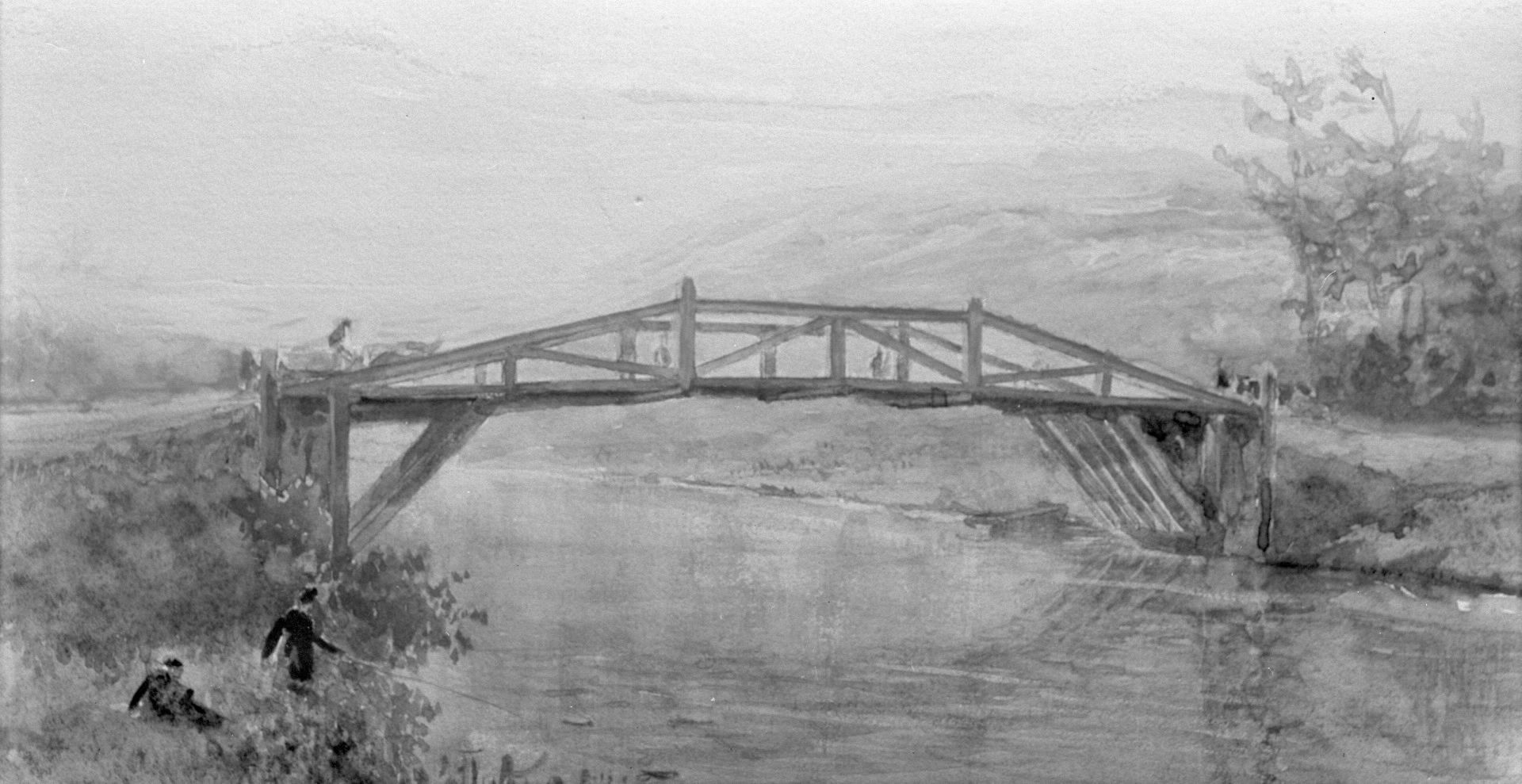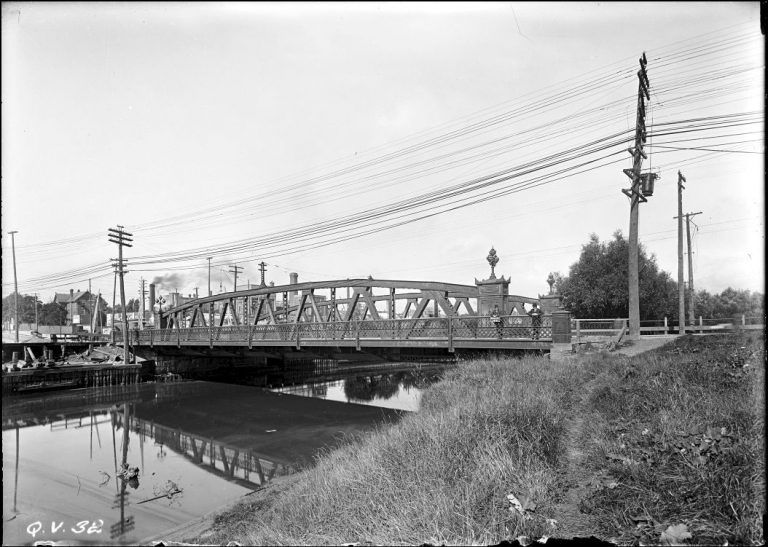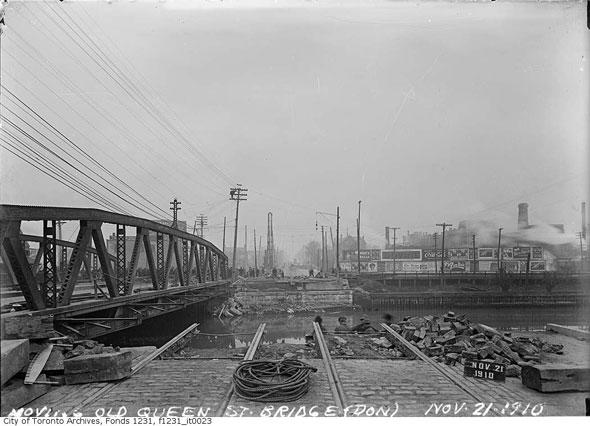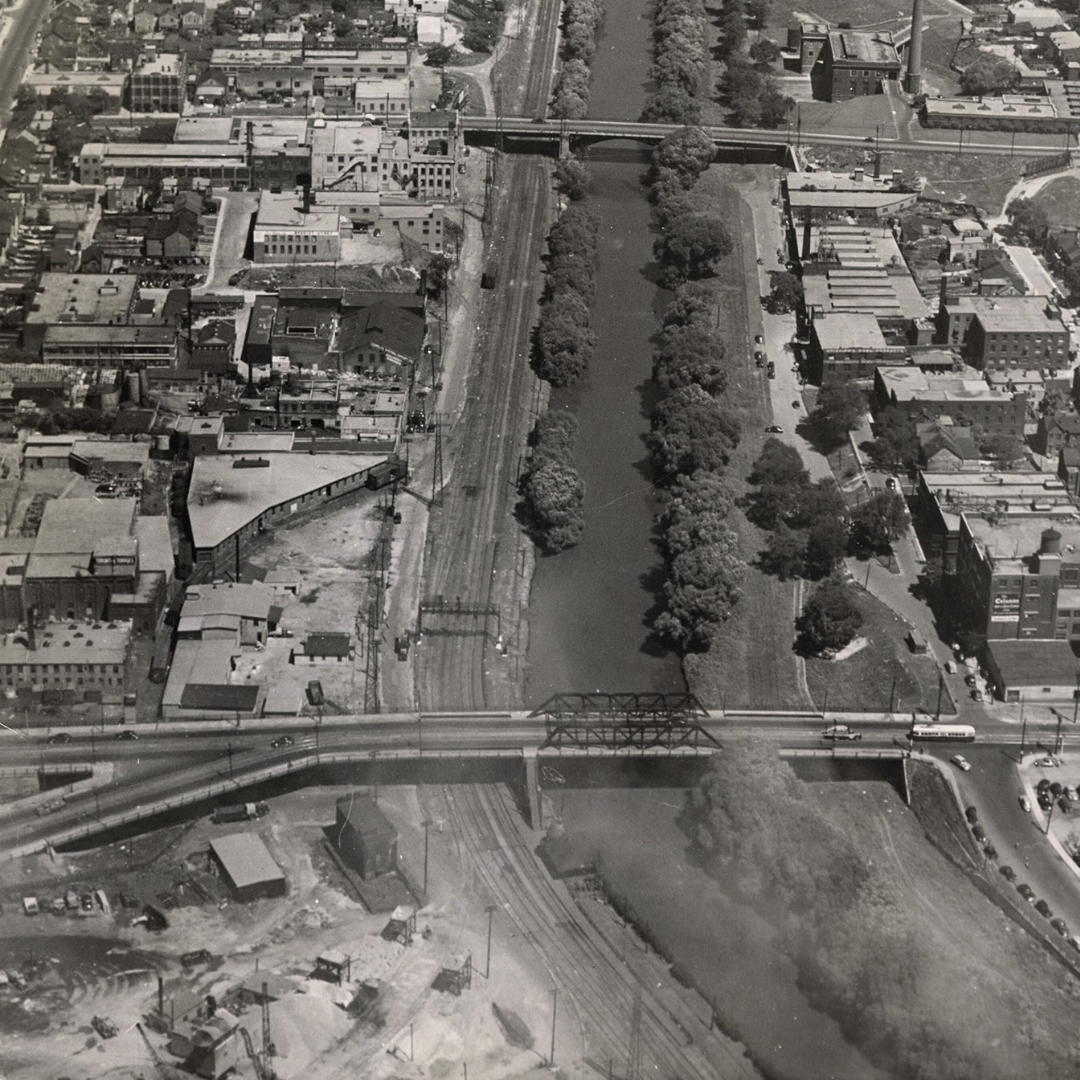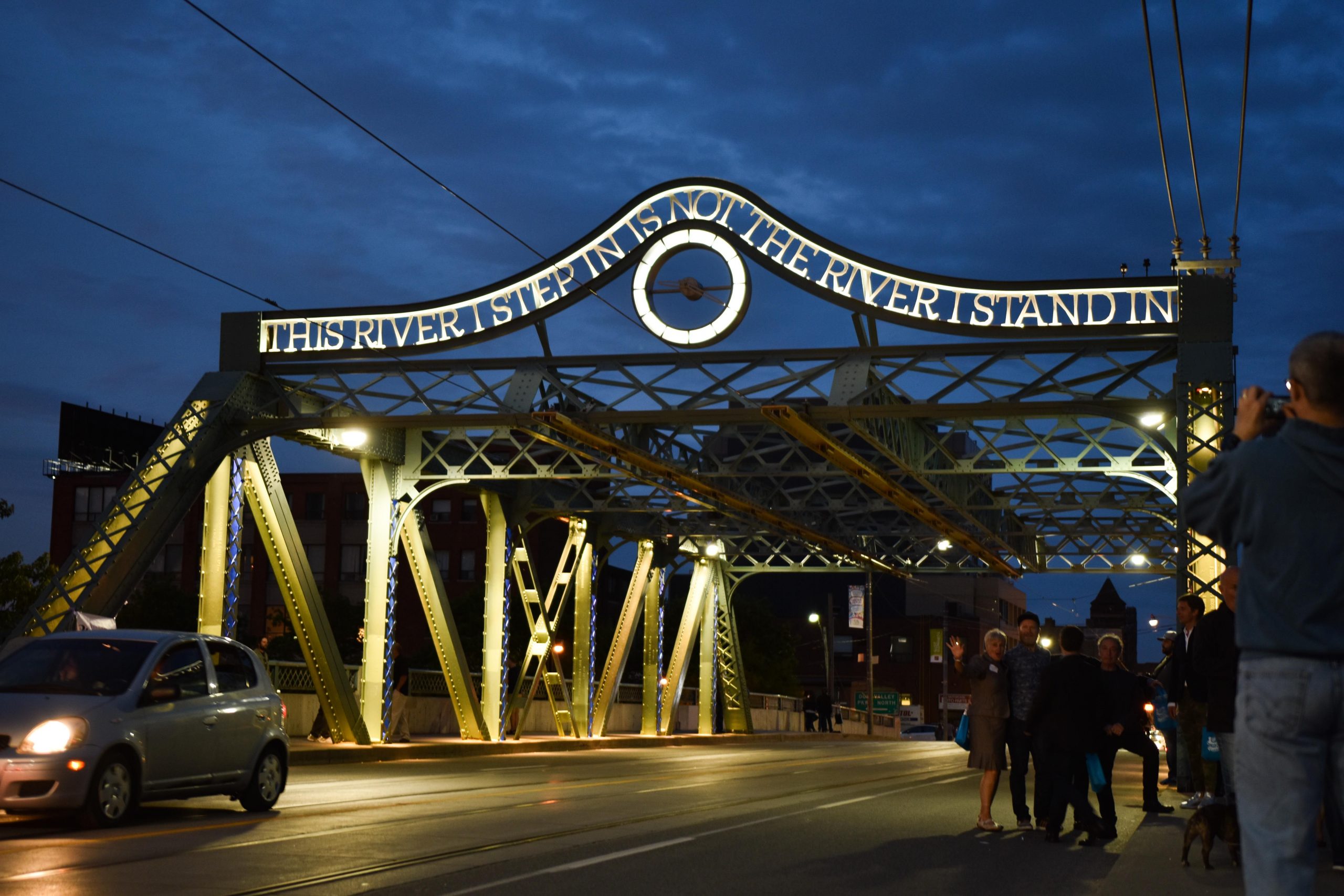In this feature #16 of the Riverside 40 Years, 40 Stories series, we’re sharing the story of the Toronto Baseball Ground, home field to the city’s first professional baseball team the ‘Torontos’. This tale uncovers its rich history, grand opening, remarkable wins , and how it’s been commemorated in Riverside neighbourhood.
Note: A 2024 update has been added at the end.
Strolling along Riverside’s Queen Street East in 2020, you would have seen a new laneway sign for ‘Baseball Place’ at the construction site of the new Riverside Square by Streetcar Developments. There is a lot in that name, as well as the heritage plaque and other memorabilia nearby: all commemorate that you are standing near the former site of the Toronto Baseball Grounds opened in 1886 and home field for city’s first professional baseball team the ‘Torontos’.
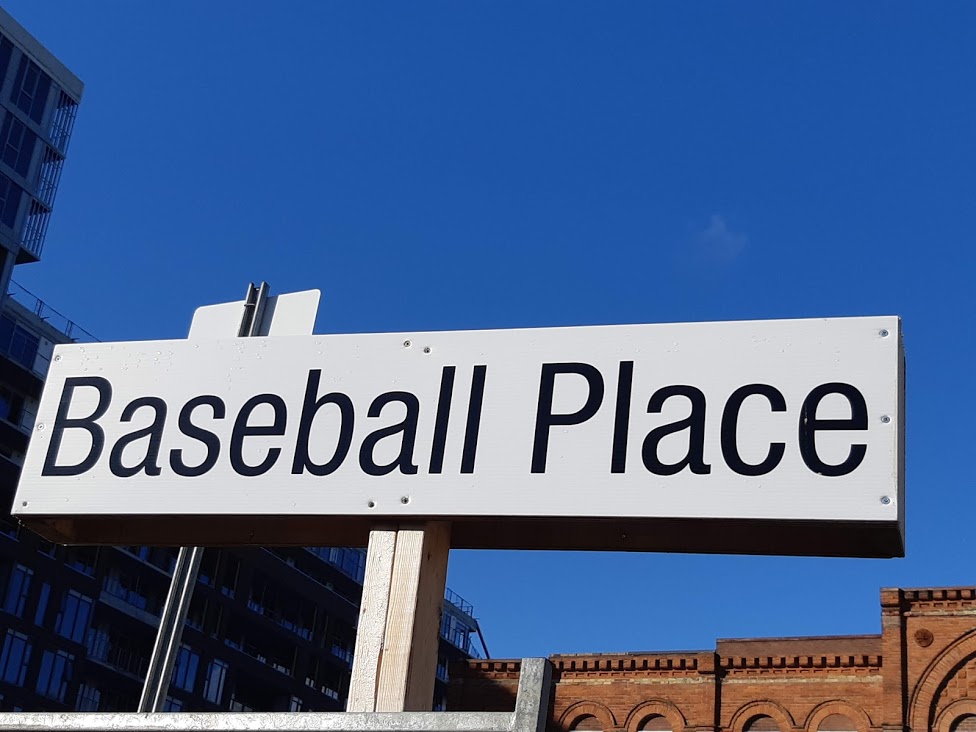
The new city laneway within the new Riverside Square Development was named ‘Baseball Place’ to commemorate the sports history of the area
About the Torontos and the Baseball Grounds
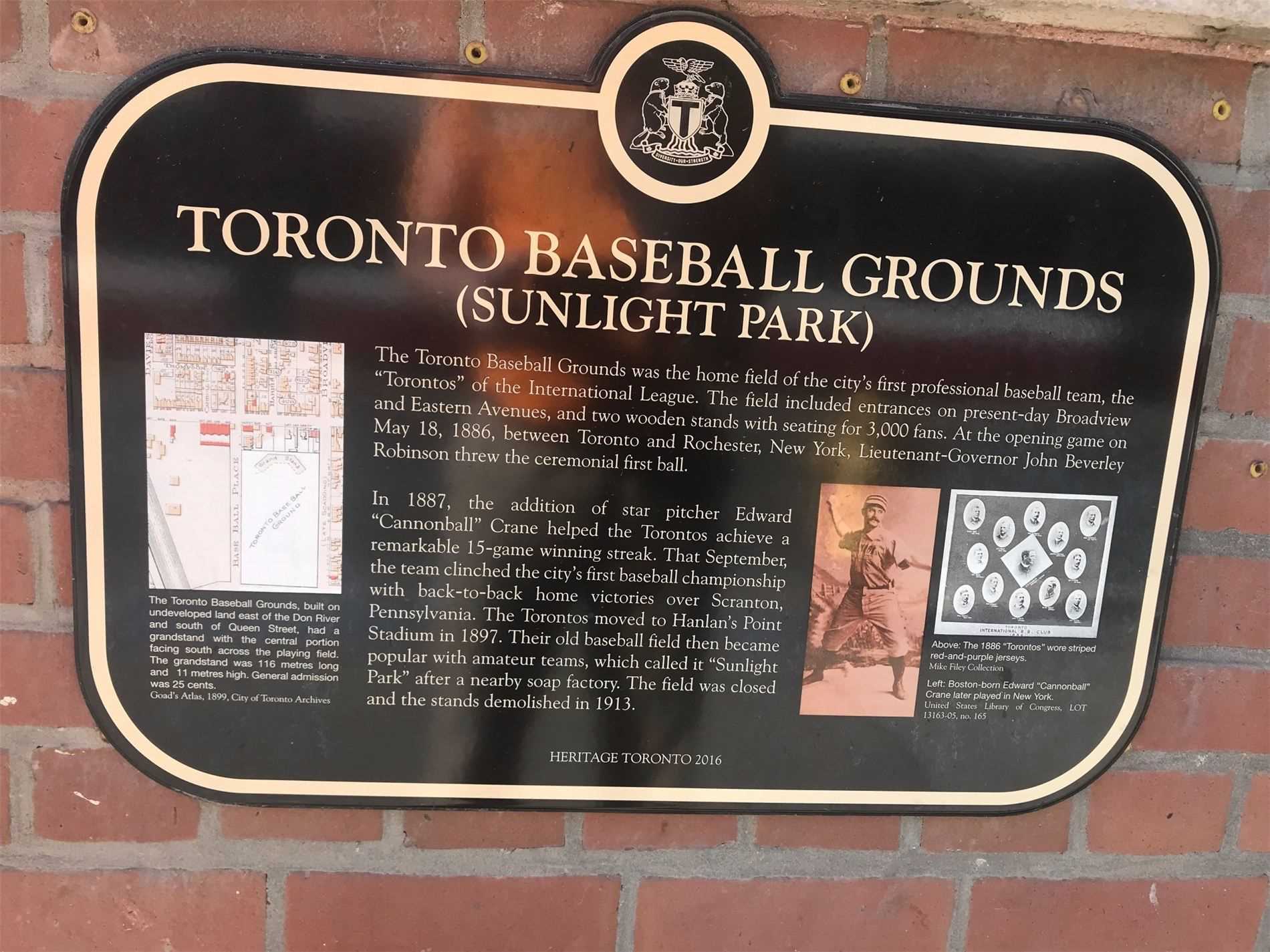
Toronto heritage plaque located on the wall of the heritage building ‘The Smith Block’ at 655 Queen Street East
Before the Toronto Blue Jays, the city’s first professional team called the ‘Torontos’ (who were later renamed Toronto Maple Leafs) played in the international league. This team invested $7000 to build an all-wood stadium near the Don River. The eight-acre stadium enclosed with high wood fence boasted two wooden stands, one being a half-hexagon grandstand offering seating for 2,000 people and other was along the right field boundary with 1,000 seats.
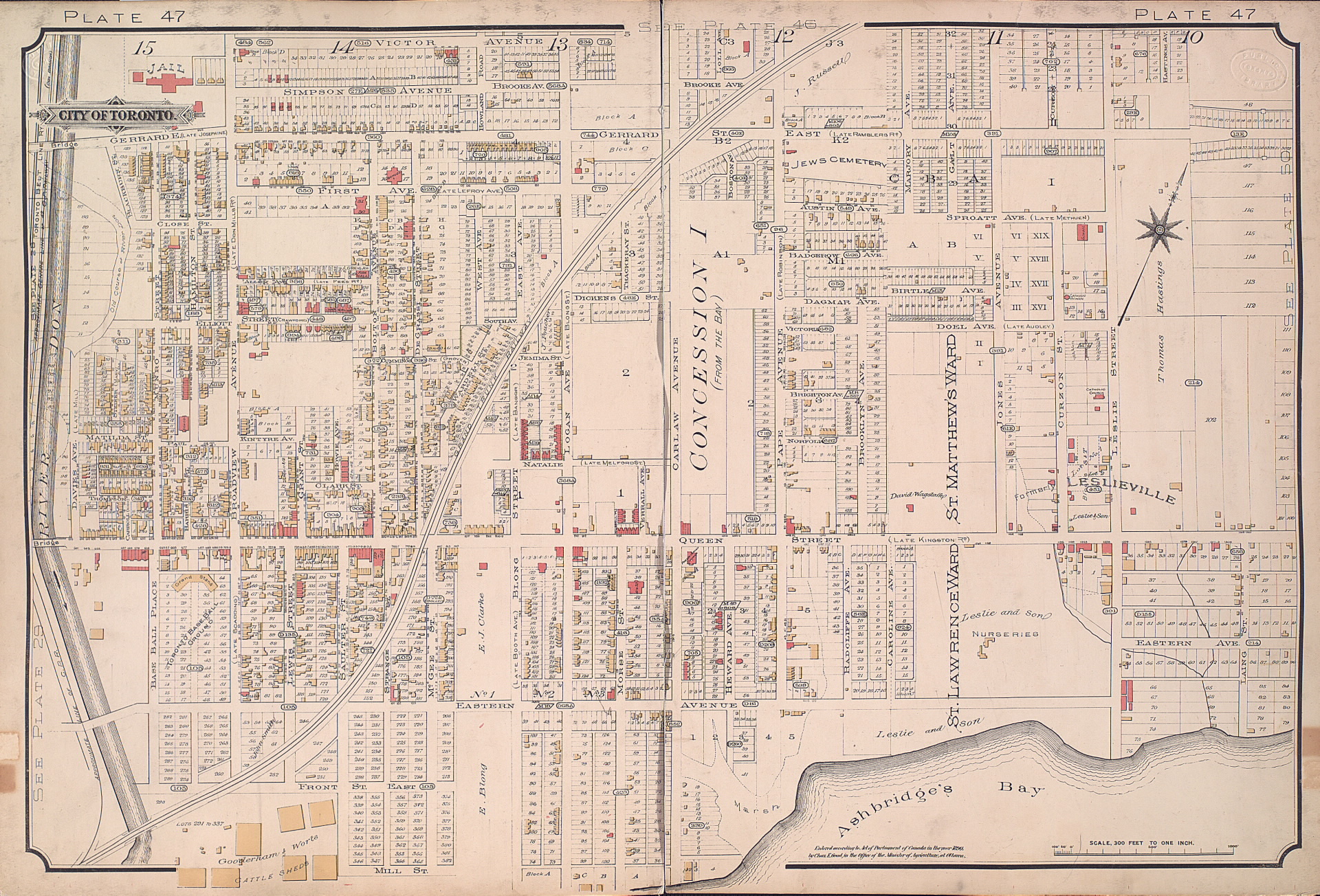
This Goad’s Atlas of 1890 shows the Toronto Baseball Ground just south of Queen near 655 Queen Street East.
The stadium saw a grand sold-out opening on May 18, 1886 and awed its audience with a match between Toronto and Rochester, New York. Ontario’s Lieutenant-Governor John Beverley Robinson honored the ceremonial first ball throwing.
Close your eyes and try transporting yourself to the rustic 1886, when people would ride up in their carriages and park their horses on the grounds.
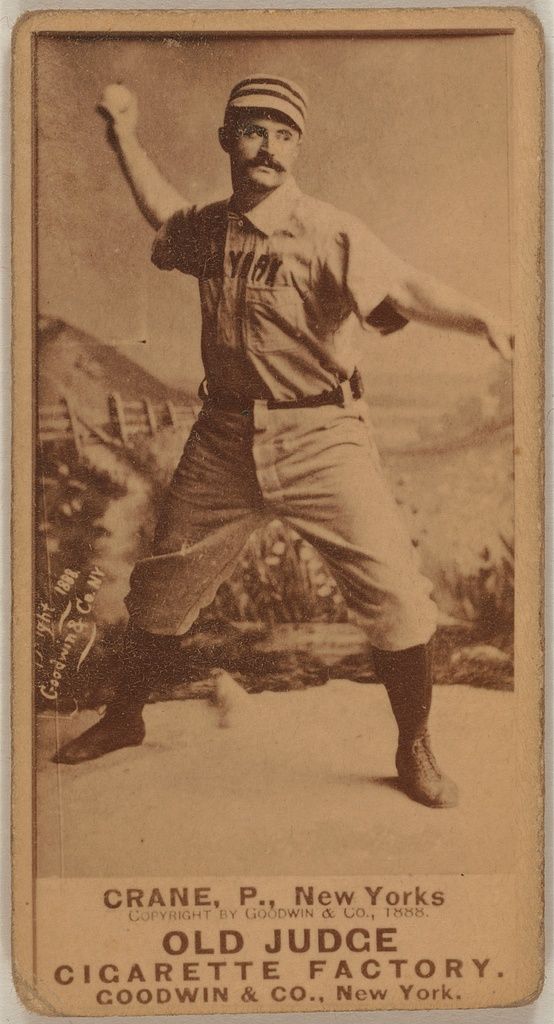
‘Cannonball Crane’ of the Torontos
It was the time when 25 cents could buy you a ticket to a live professional baseball championship game and around 45 cents could do the same but with the luxury of a leather-cushioned seat under a covered stand. Some people even viewed the match from their private carriages.
1887 saw history in the making when the Torontos achieved a momentous 15-game winning streak; credit to the newly- acquired star pitcher Edward Crane, nicknamed Cannonball. That year the team made a clean sweep in the city’s first baseball championship with back-to-back home victories.
The Torontos had around a decade’s stay at the Baseball Grounds and in 1896, they moved to the larger stadium at the Hanlan’s Point on the Toronto Island. The Toronto Baseball Ground then became the go-to ground for local amateur teams who nicknamed it ‘Sunlight Park’ after the nearby Sunlight soap factory built by the Lever Brothers. Local football, baseball and lacrosse leagues started using the park.
Sunlight Park witnessed its last sporting event, a football match, in 1913. That same year the stands were demolished and the field was closed.
Memorabilia of the Toronto Baseball Ground in Riverside
The city and neighbourhood never forgot the baseball grounds, for many years (possibly 50 or so) a laneway called Baseball Place did exist near the location of the new ‘Baseball Place’ lane.
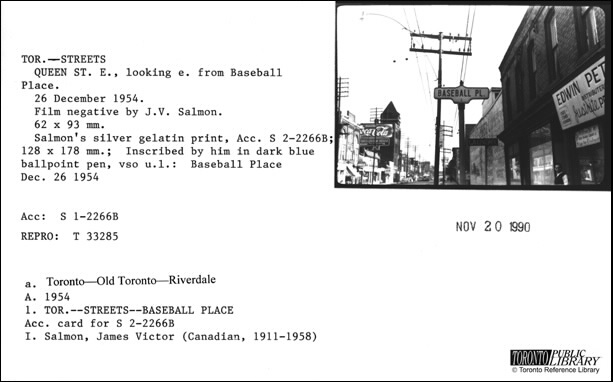
Queen Street looking east from Baseball Place. December 26, 1954.
While that older sign is said to have mysteriously disappeared sometime in the 1990s, the name has now been resurrected along with the re-development of the space to the Riverside Square residential and commercial community and the Riverside Common Park.
Further keeping the sports heritage of the area alive in Riverside and Toronto are some modest memorabilia, which include the Toronto Baseball Ground plaque placed by Heritage Toronto on the outer wall of the building at 655 Queen Street East.
The history is also celebrated by the Riverside BIA and local artists with the ‘Sports History and Legacy Murals’ by Toronto artist Monica Wickeler, on the wall at 1 Munro Street, which is across the street from the Baseball Place laneway. The mural depicts the stories of the heritage of that area, including the Toronto Baseball Grounds.
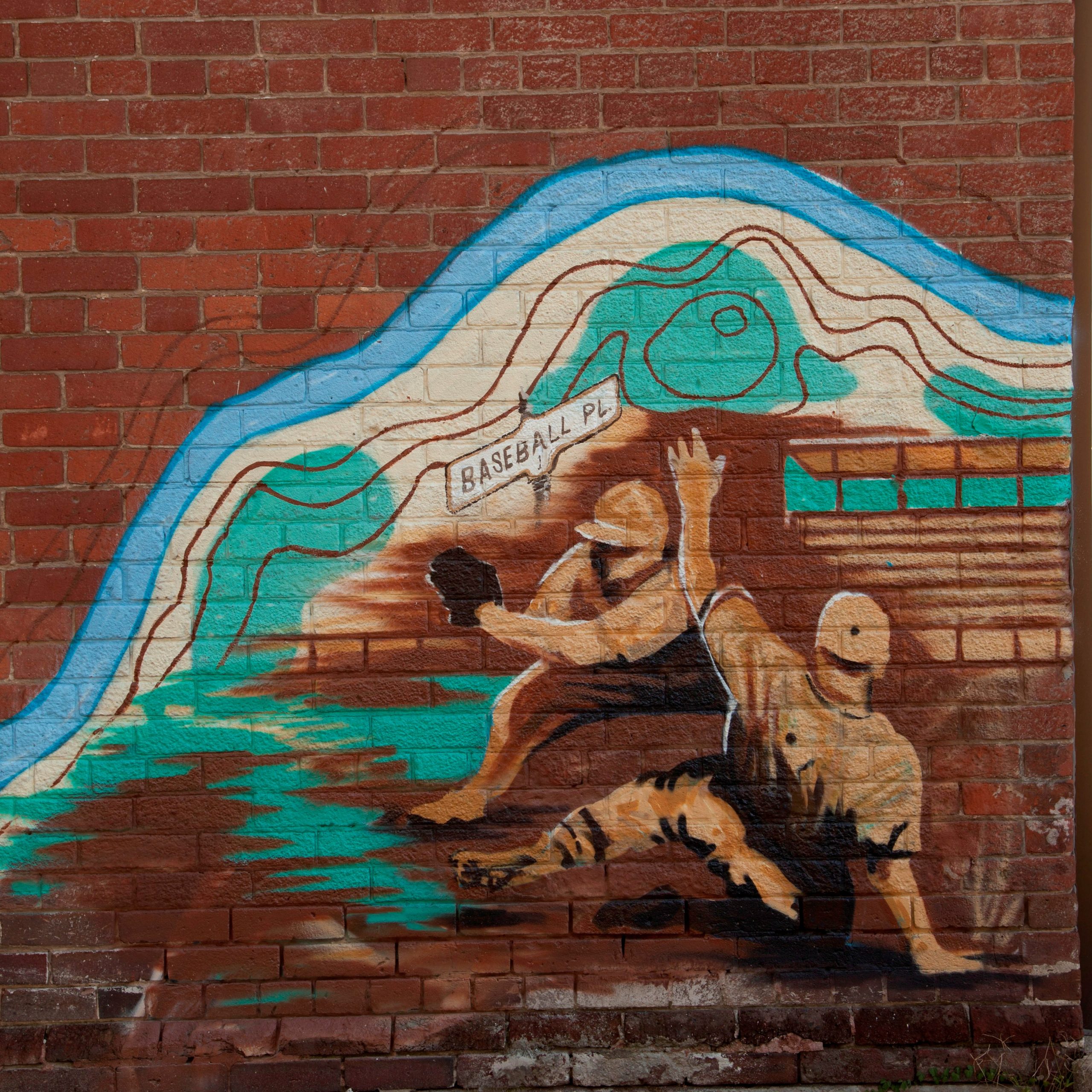
Image from the Riverside Sports History and Legacy Mural by Toronto artist Monica Wickeler
Fun fact: a mural within The Broadview Hotel stairway includes another salute to the contribution of ‘Sunlight Park’, the Toronto Baseball Ground.
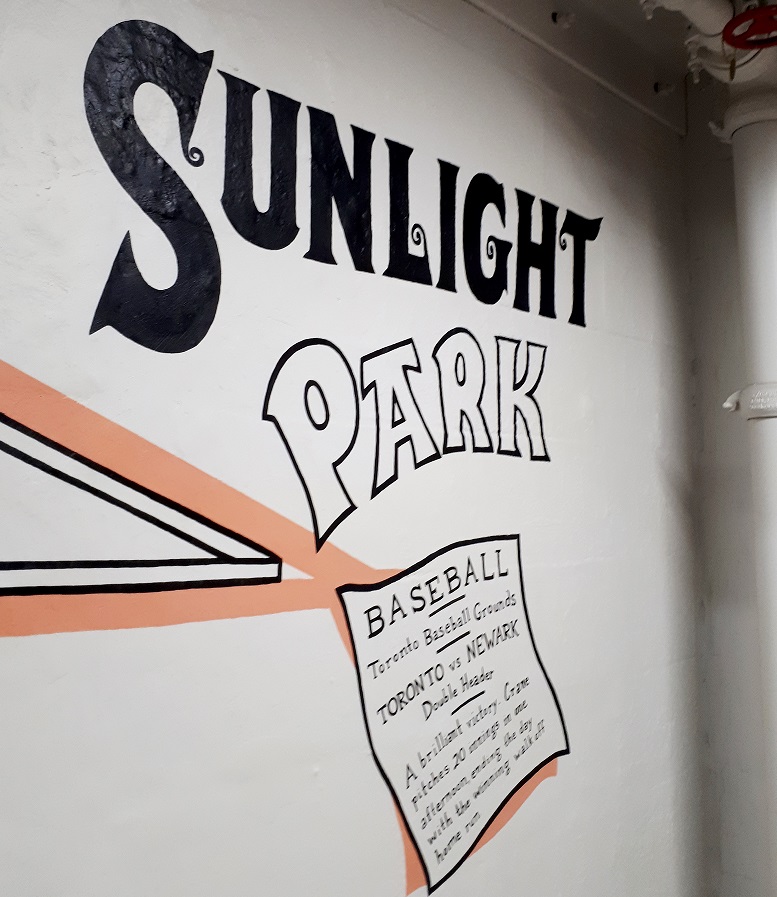
It does seem fitting that the former Baseball Ground site was, in 2020, was redeveloped partially as the new Riverside Common Park, bringing back the uses of pleasure and space to enjoy the outdoors. The City-owned park, developed by Streetcar Developments, was designed for community activations and public events. The design elements of the park pay homage to the rich sports history of the area with the baseball diamond motif of the pavers and overhead lighting, and the diamond shaped plaques in the ground commemorating the history.
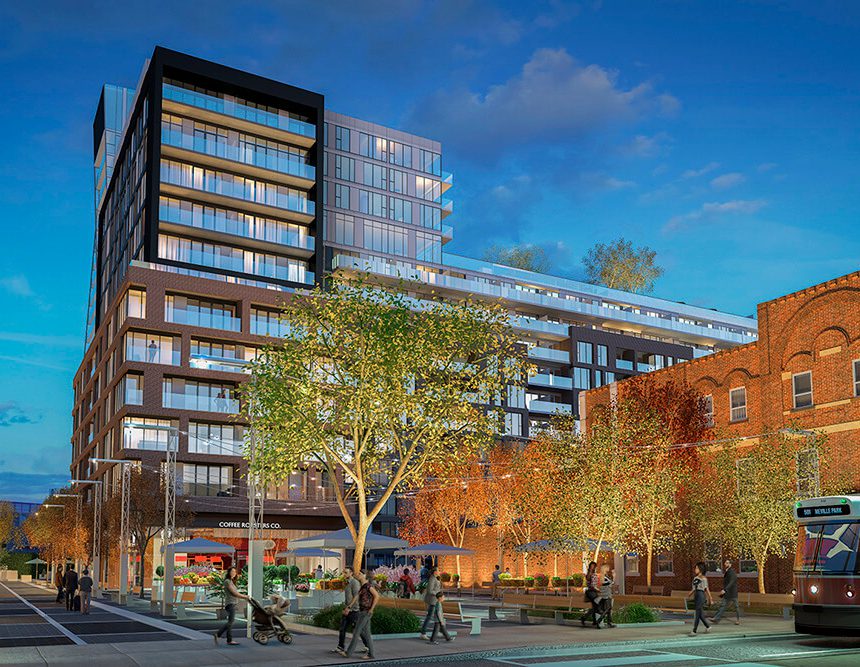
A rendering of the new Riverside Common park, under construction just south of Queen Street East in 2020.
Officially opened in October 2021, today in 2024, the Riverside Common Park has a couple of years of public programming and 30+ public events under its belt.
Check out this short video tour of the Riverside Common space. Please get in touch with the Riverside BIA if you are interested in being involved in programming of this incredible park space.
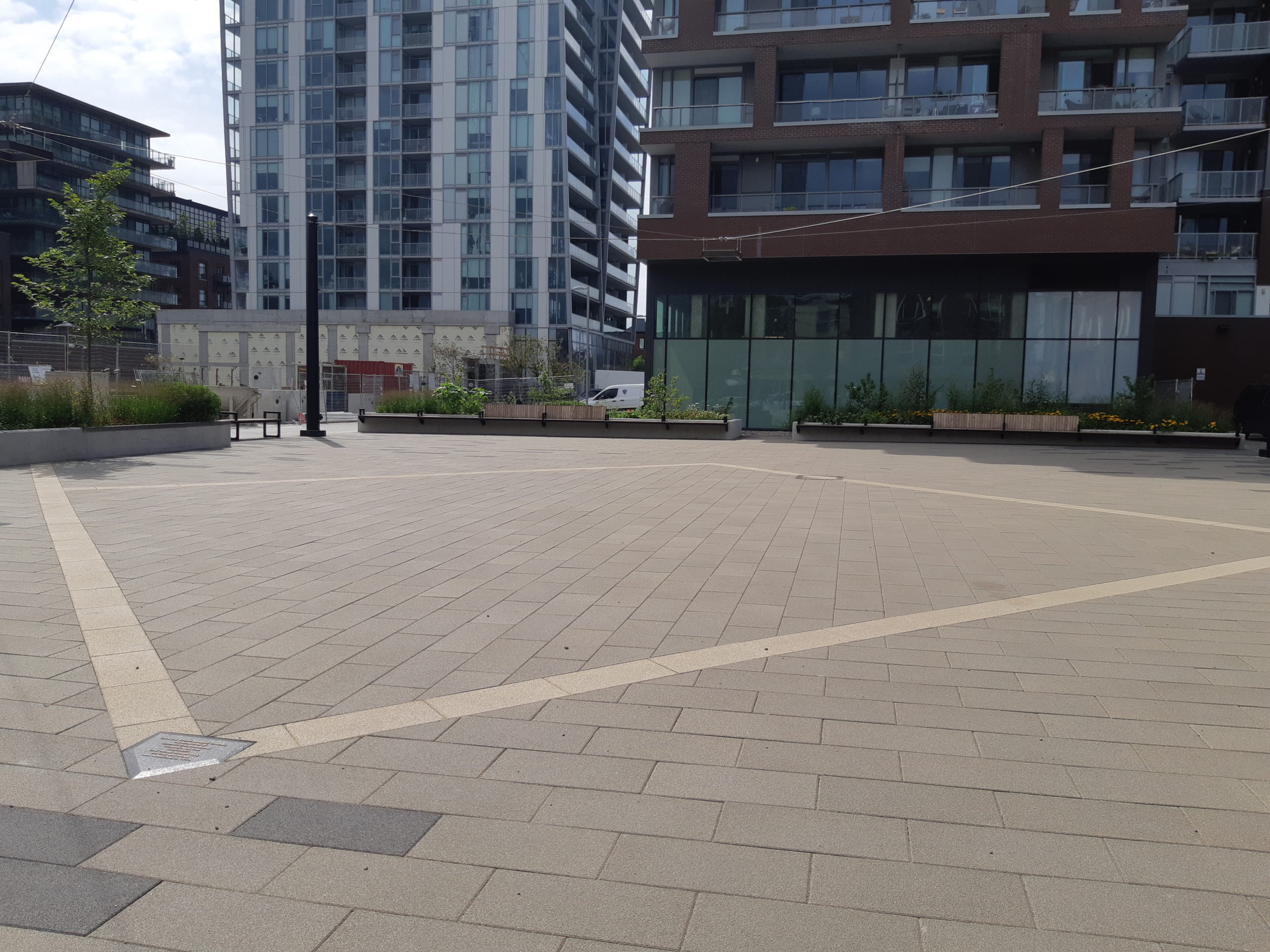
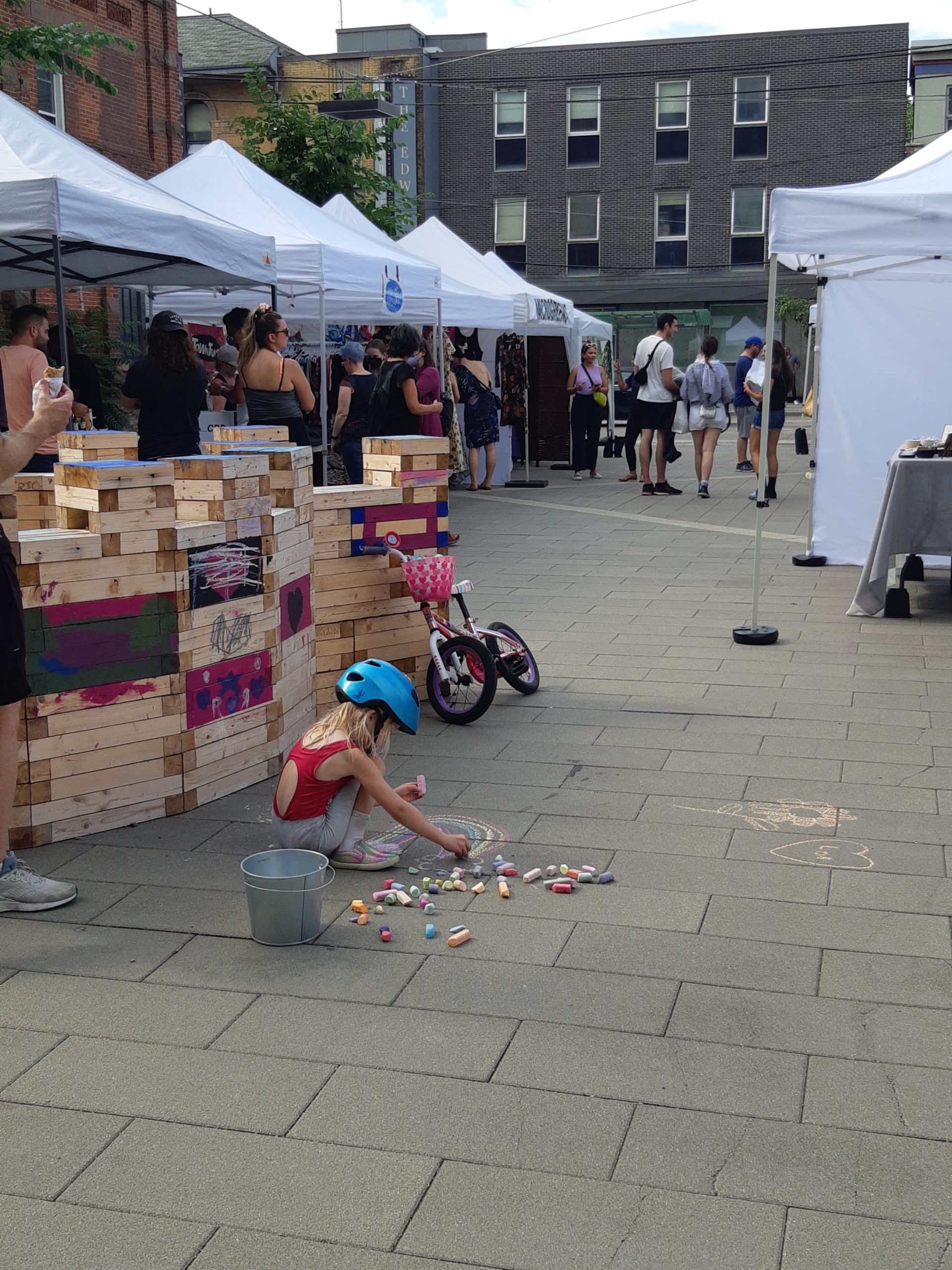
The ‘Riverside BIA 40 Years, 40 Stories’ Series is part of how we’re celebrating the 40th anniversary of this incredible neighbourhood of community-builders.
